Exclusive interview with Dr Luisa Paiva, General Manager at IONA, Luanda, Angola
Dr Paiva agreed to take time out of her busy schedule to talk with CBM Luxembourg. Dr Paiva has a wealth of experience in eye health care in Angola and talks to us about her work, the challenges in Angola, and how CBM is supporting IONA to make eye health care more accessible to those in need.
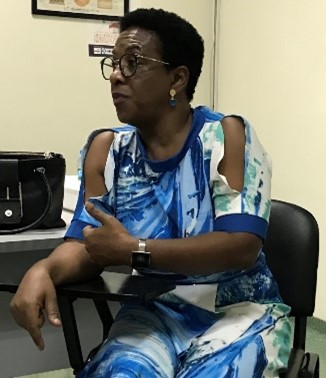
Q1. Dr Paiva, thank you for agreeing to be interviewed. Can you tell us a little about your background? How long have you been working at IONA? What brought you there?
I joined the IONA in 1990 at the invitation of an Ophthalmology professor (at the time there was no internist) to study the specialty and in 1995 I became a specialist.
Although it wasn’t my first choice, I couldn’t have made a better choice! I discovered that it was my passion.
In October 2014 I was appointed to the position of General Manager, where I remain until today.
Q2. What is the biggest challenge you experience with eye health care in Angola? Can you tell us about the number of ophthalmologists, availability of tests and treatments, the training programs for doctors, eye health in children, etc?
Ophthalmology in Angola is a huge challenge. Nationally, there are 94 ophthalmologists, of which 58 are national. Of these, almost 90% are concentrated in the capital – Luanda, which is home to 2/3 of the population of Angola, estimated in 2022 at 33 million inhabitants. This means there is 1 ophthalmologist for about 350,000 inhabitants, when the WHO recommendation is 1 ophthalmologist for 10,000 inhabitants.
Another major challenge is the almost non-existence of a Primary Eye Care network, which causes tertiary care institutions such as IONA to be overloaded with care for primary-level pathologies and with long waiting lists for appointments.
IONA is currently the most renowned national service and has the skills necessary for good service in the different ophthalmic subspecialties, complementary exams, as well as in the performance of different types of eye surgeries, from the simplest to the most complex, such as vitreous surgery – retinal, cataract extraction by phacoemulsification, repair of the eyeball and adnexa, etc. Until a few years ago, many patients went abroad to undergo this type of surgery.
Currently, IONA has 40 intern doctors from different provinces who specialize in Ophthalmology and also trains specialized nurses. We hope that this will help minimize the shortage of specialists and specialized technicians, especially in provinces where there are no eye health professionals.
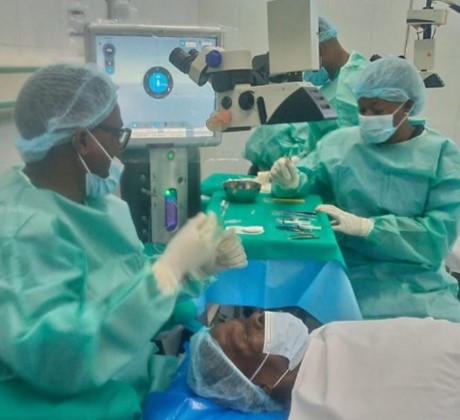
Q3. Since IONA began collaborating with CBM Luxembourg, there has been several successes, namely the building up of the specialization program in cataract surgery and the increase in the volume of cataract surgeries performed. What impact have these actions had? What other actions have you seen CBM Luxembourg take in Angola, with IONA?
The agreement with CBM has been very fruitful, both for the donation of consumables for performing cataract surgeries and equipment for experimental surgery, which has led to an increase in the number of surgeons, with an increase in the number of surgeries. Still, with few specialists, the waiting list for cataract surgery is still long.
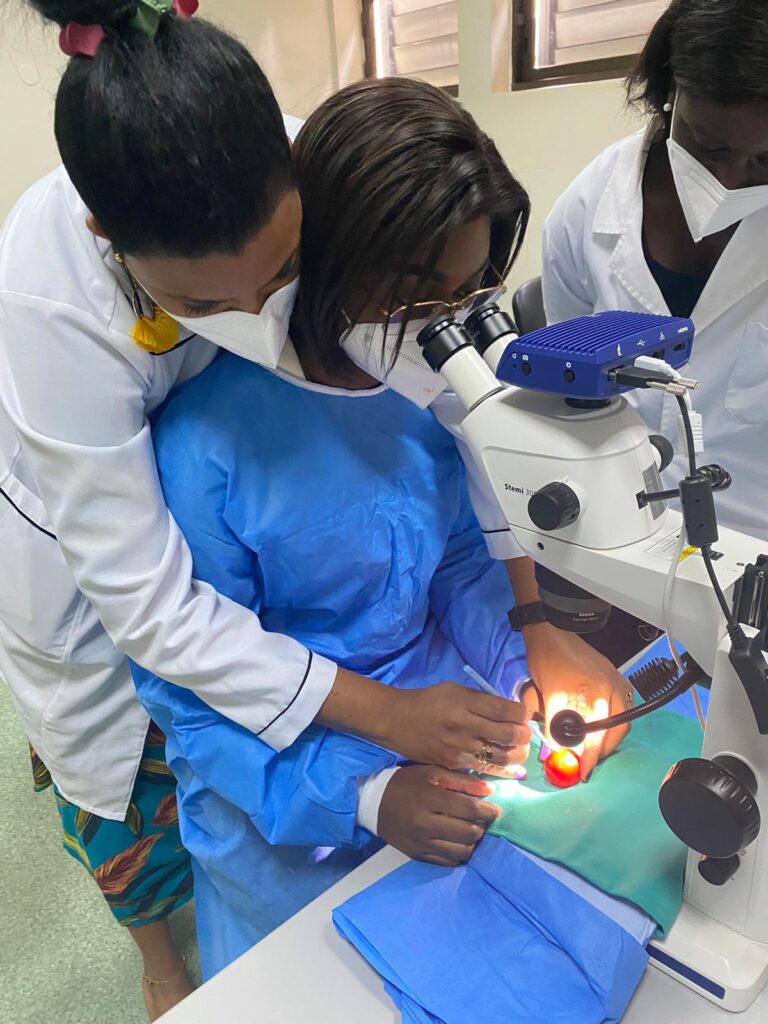
Q4. CBM Luxembourg has sent 2 microscopes to IONA so far, also CBM has helped with setting up the “wet lab”? Why were these important? What impact are these changes having for you and your teams?
Another gain resulting from the agreement with CBM Luxembourg was the creation of an experimental surgery laboratory with the donation of 2 microscopes. This reduces the surgical training time, as well as gains in surgical skill and dexterity, making the trainee safer and providing a better service to the population.
Q5. IONA has been providing English courses for trainee doctors. Why is this such a priority for trainee doctors?
Another important part of the CBM – IONA memorandum of understanding was English training for resident physicians. It was considered a priority not only because it was considered a universal language, important for consulting and carrying out research work, but also because it provided them with basic knowledge of the language, to be used in the country where the surgery internships were carried out.
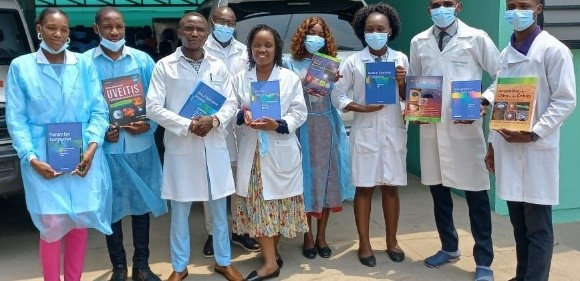
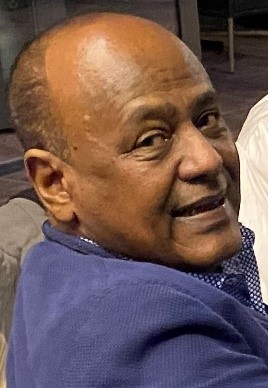
Q6. How have you been inspired by the work of Dr Michael Ketema in DESSO?
My visit to Desso opened up new horizons. What caught my attention the most was the fact that it had trainees from different countries, which also became an inspiration for us. I hope that in the near future we can also be a reference for Portuguese-speaking African countries.
DESSO is a well-structured service, with an experimental surgery laboratory.
Our thanks to CBM for having promoted and sponsored the meeting and to Dr. Michael Ketema for his hospitality.
Q7. Can you tell us about your hopes for the coming few years?
The structure of the current IONA does not support the high demand for patients. The construction of a new institute has already been approved by presidential decree, which should be completed within 3 years. However, while construction is underway, we will have to move to temporary facilities that are larger than the current ones.
Q8. Outside of central Luanda, will IONA be cooperating with other stakeholders, such as the Norwegian Blind Association in the province of Uigi or the church-dependent SOLE clinic in Benguela and also in poor suburbs of Luanda?
Regarding the surgical training project abroad sponsored by CBM, we hope that it will continue, as well as the donation of surgical kits. This year, we have scheduled visual screening and cataract surgery campaigns, mainly on important dates such as World Glaucoma Day on March 12th and World Eyesight Day in October. We plan a visual screening to be carried out in a primary school during Glaucoma week. We are currently in the middle of a campaign promoted by the Ministry of Health (MINSA) to reduce waiting lists for surgeries in different specialties, where more than 500 cataract patients have already been operated on. The young, newly graduated physicians have participated and served as an inspiration to their colleagues, who are looking forward to their surgical training abroad.
Visual screening campaigns are carried out in the different municipalities of Luanda, with plans to extend to some provinces. It is also an intention of MINSA, that in addition to screenings, cataract surgeries are also carried out.
As for the Norwegian Association of the Blind, we have already had a few meetings and have shown willingness and availability for cooperation agreements, as well as being open to other partnerships and collaborations.

Q9. Dr Paiva, thank you for your time. To wrap up, what would you like to tell donors of CBM Luxembourg? Do you have a message for them?
On behalf of IONA, MINSA and the Angolan people, we thank Fondation CBM Luxembourg.
Your donations have had a positive impact, improving the lives of thousands of patients and consequently on their families.
